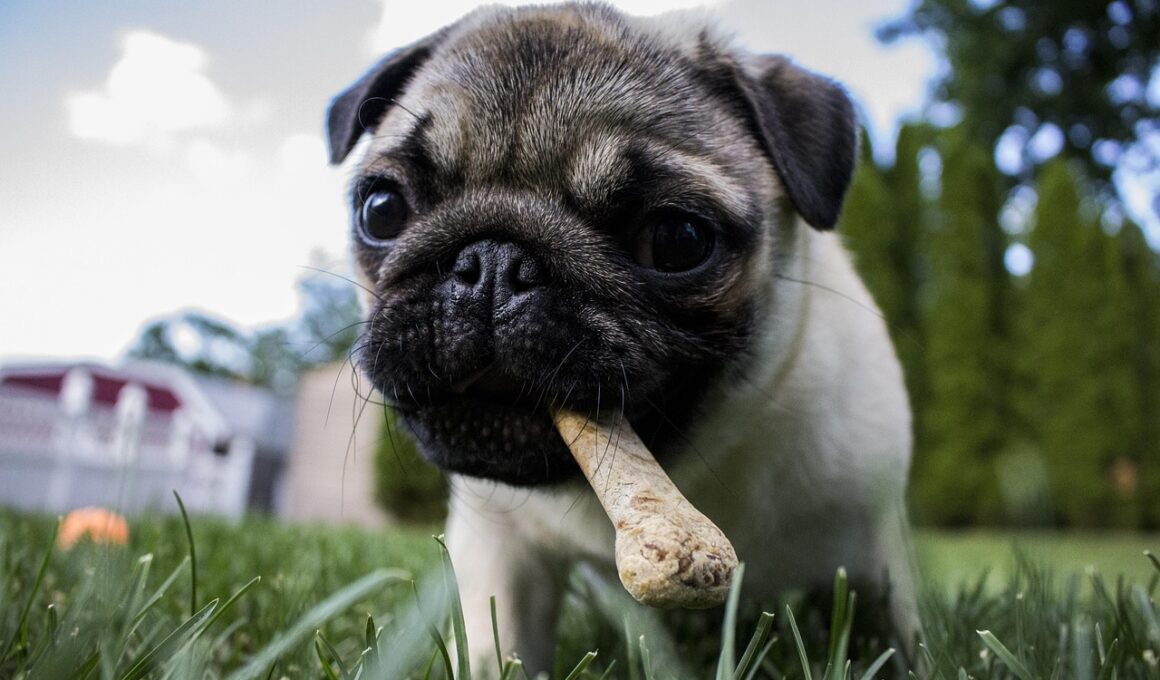Understanding Breed Tendencies Towards Destructive Chewing
Destructive chewing is a common behavioral issue that many dog owners face. This behavior can be particularly prevalent among certain breeds due to a variety of reasons. Understanding breed tendencies is crucial for preventing and addressing these problems. Different breeds were developed for specific purposes, which can influence their chewing behavior. For instance, working breeds like Border Collies may have higher energy levels and need more stimulation, leading them to chew destructively when bored. Alternatively, some toy breeds might chew as a way to cope with anxiety. Identifying the underlying reasons for destructive chewing can help in finding the right strategies to manage it. Owners should also be aware of materials their pets are inclined to chew. Some dogs may be attracted to furniture, shoes, or even electrical cords. To minimize destructive chewing, providing appropriate chew toys and mental stimulation is important. Engaging your dog in activities such as fetch, obedience training, or puzzle toys can keep them busy and reduce the likelihood of them resorting to chewing unwanted items in your home.
Different dog breeds exhibit various tendencies towards chewing due to their genetic and behavioral backgrounds. For example, breeds like Labrador Retrievers and Beagles are notorious for being avid chewers, often due to their high energy levels and inquisitive nature. These breeds require ample exercise and mental engagement to prevent boredom, which can trigger destructive chewing. On the other hand, smaller breeds may engage in chewing as a coping mechanism for anxiety. Understanding this distinction can help owners tailor their approaches to their dog’s specific needs. Other breeds, such as Terriers, may chew because of their instinctive digging and hunting behaviors. Targeting these intrinsic tendencies with appropriate outlets such as chew toys or scheduled playtime can significantly reduce damage around the house. Engaging in regular training sessions reinforces positive behavior and builds a stronger bond between the owner and the dog. Chewing is often a natural behavior, so it’s essential to redirect this energy towards acceptable items rather than banning it completely. Each breed has unique requirements, and being proactive can ensure that your dog’s chewing becomes a more manageable aspect of their behavior.
Chewing Behavior in Working Breeds
Working breeds, like German Shepherds and Rottweilers, experience chewing behavior stemming from their active lifestyles and need for engagement. These breeds were developed for physical labor, which means they require regular exercise and mental stimulation. When left alone or under-stimulated, they can resort to chewing furniture, shoes, or various household items to relieve boredom or anxiety. Additionally, working breeds often possess a high prey drive, which can compel them to chew intensely. Owners can adopt a proactive approach by ensuring these dogs receive plenty of daily exercise, training, and interactive toys. Chew items specifically designed for tough chewers can help satisfy their urge to gnaw while redirecting their energy into more appropriate channels. Consistent training programs should be implemented to teach these dogs what is acceptable to chew. Positive reinforcement techniques work well in encouraging desired behaviors. Also, engaging them in activities that tap into their instincts, such as agility training or scent work, can further alleviate destructive chewing. By providing a structured routine and incorporating fun activities, owners can significantly diminish the likelihood of destructive chewing in their working breeds.
Many breeds, such as small terriers, are notorious for destructive chewing behaviors, particularly when left unsupervised. Chewing can be a sign of anxiety or boredom in these smaller dogs. Often, they may engage in this behavior out of necessity, stemming from their energetic nature. To combat this issue, owners should consider providing safe chew toys and interactive games to keep them occupied. Furthermore, leaving them with items that have soothing scents, such as used clothing, can provide comfort and help reduce anxiety levels. Creating a safe environment enclosed with barriers or dedicated areas can also help minimize damage. Regular exercise remains crucial, as tired dogs are less likely to engage in destructive behaviors. Taking the time to socialize these dogs with other pets can also help alleviate some of their anxiety. Incorporating mental challenges, such as hide-and-seek games or scent work, encourages them to utilize their brain and reduce their chewing issues. Furthermore, consistent training routines that reinforce positive behaviors will guide them towards becoming well-behaved companions. Identifying triggers for anxiety and addressing them proactively is vital in curbing destructive chewing behaviors in small breeds.
Guarding Against Chewing in Toy Breeds
Toy breeds, such as Chihuahuas or Pomeranians, have their own unique tendencies towards destructive chewing that owners should understand. These small dogs may chew to cope with separation anxiety, often leading to excessive chewing when left alone. Their natural instinct to feel secure can drive this behavior, leading them to chew items that smell like their owner. Providing comfort items or a safe space can be beneficial for reducing anxiety and minimizing destructive chewing. Employing crate training helps them develop a sense of security while preventing access to tempting household items. Owners can also use distraction techniques, such as providing interactive toys that encourage gnawing but are safe for them to chew on without creating additional mess. Regular playtime is essential, as these breeds often need as much stimulation as larger dog breeds, despite their size. Training sessions should be frequent yet short, focusing on positively reinforcing desirable behaviors. Utilizing treat rewards can make these sessions engaging and fun. Emphasizing the need for proper socialization will also foster confidence. Approaching these unique needs with understanding is crucial to managing destructive chewing effectively.
A significant factor contributing to destructive chewing behavior is insufficient mental stimulation. Many dogs resort to chewing as a way to fend off boredom or alleviate pent-up energy. This situation is particularly prevalent in high-energy breeds, who might require more rigorous exercise routines. Creating a structured daily schedule that includes interactive playtime, training sessions, and engaging tasks can help alleviate excessive chewing. Dogs enjoy working for their food through puzzle toys or treat-dispensing devices, stimulating both their minds and bodies. Regularly rotating toys can sustain their interest and ensure they remain engaged. Incorporating activities such as agility or obedience training can also significantly reduce destructive tendencies. Many dogs thrive on routine; establishing a predictable daily schedule helps them feel secure and understand what to expect. Engaging your dog socially can reduce anxiety that leads to chewing too. By providing the right environment for your dog, their chewing behavior can better align with acceptable items. Identifying the right outlets and providing a structured routine is crucial in managing potential destructive chewing, ensuring the happiness and fulfillment of both the dog and its owner.
Conclusion: Understanding and Managing Chewing
Understanding the various breed tendencies towards destructive chewing is vital for successful dog ownership. Whether dealing with an energetic working breed or a anxious toy breed, knowing the root causes of chewing behavior can make a significant difference. Providing adequate mental and physical stimulation through structured activities is essential in preventing boredom that leads to destructive behaviors. Tailoring your approach based on your dog’s breed and individual personality helps address chewing effectively. Owners should also be patient and consistent, ensuring they reinforce positive behaviors while redirecting chewing. Adjustments should be made based on the unique needs of each dog, promoting strategies that involve safe chew items and engaging activities. It’s important to remain vigilant about household items that may pose a temptation, ensuring they are out of reach. Lastly, fostering a supportive environment rich in love and positive reinforcement can help guide your dog towards desirable behaviors. By employing these techniques, you can enhance your pet’s quality of life and strengthen your bond, resulting in a happy and well-adjusted companion.
In addition to understanding breed tendencies and implementing successful management strategies, seeking the assistance of a professional trainer can be a wise decision. Trainers equipped with the knowledge and skills to deal with diverse dog behaviors can tailor programs specific to the needs of the dog. Joining group training sessions, especially for social breeds, helps assure they receive not only training but also the chance to socialize appropriately with others. Building on their existing behavior patterns can significantly reduce destructive chewing by enhancing obedience skills while also promoting a healthier lifestyle. Additionally, dog owners are encouraged to engage in research regarding effective chew toys and methods suited for their dog’s energy levels and breed-specific traits. Committing to the ongoing education of dog behavior allows owners to adapt their strategies over time, accommodating any changes associated with age or health. This comprehensive approach, combining understanding of breed tendencies, personal commitment, and professional help, ensures that destructive chewing becomes manageable rather than a detrimental behavior. Ultimately, with the right techniques and commitment, the bond between dogs and their owners can thrive, creating a well-rounded and happy pet.


